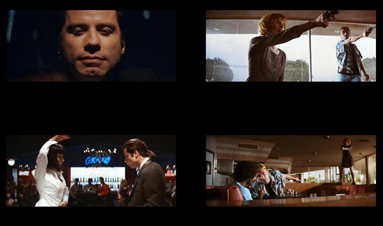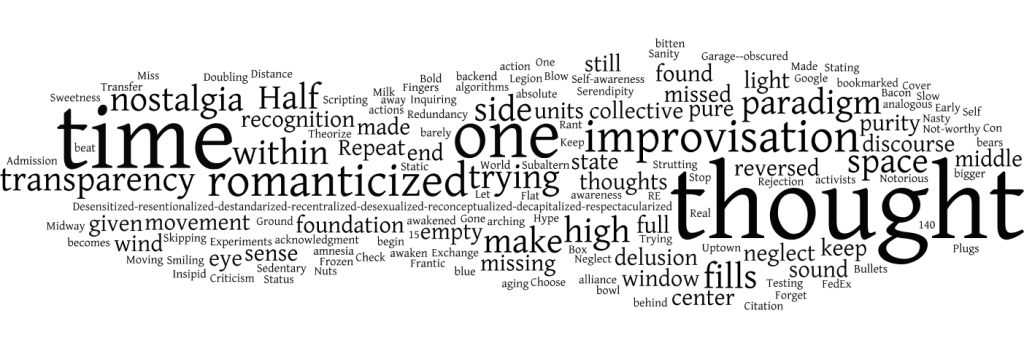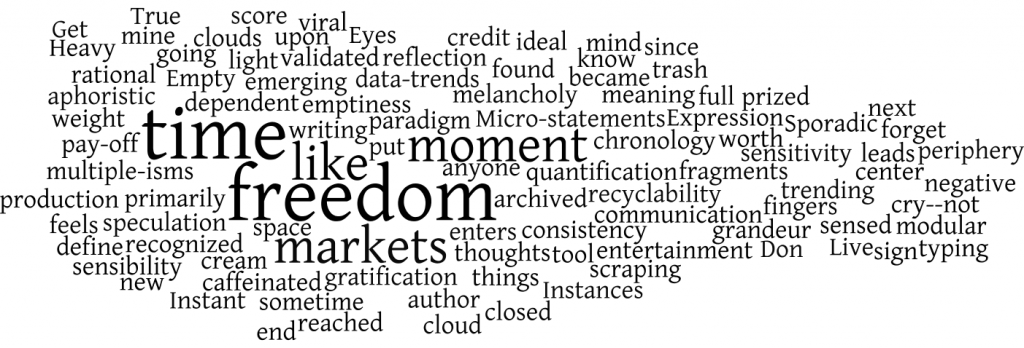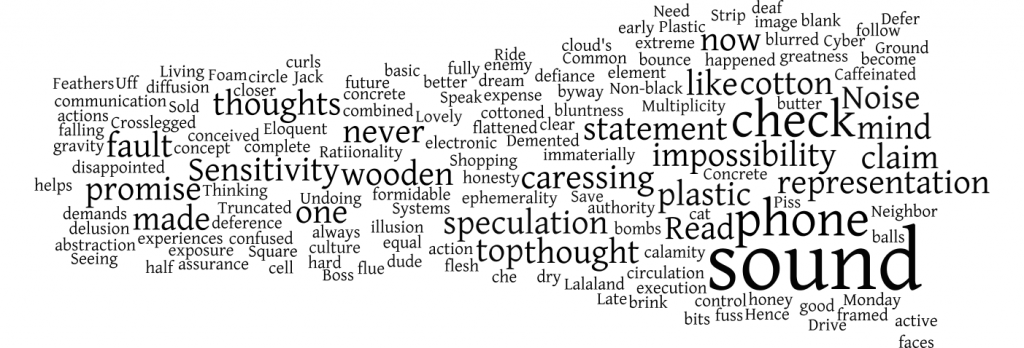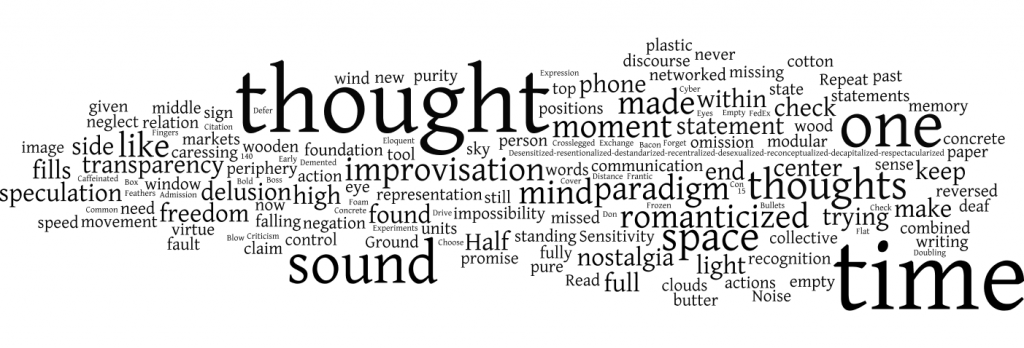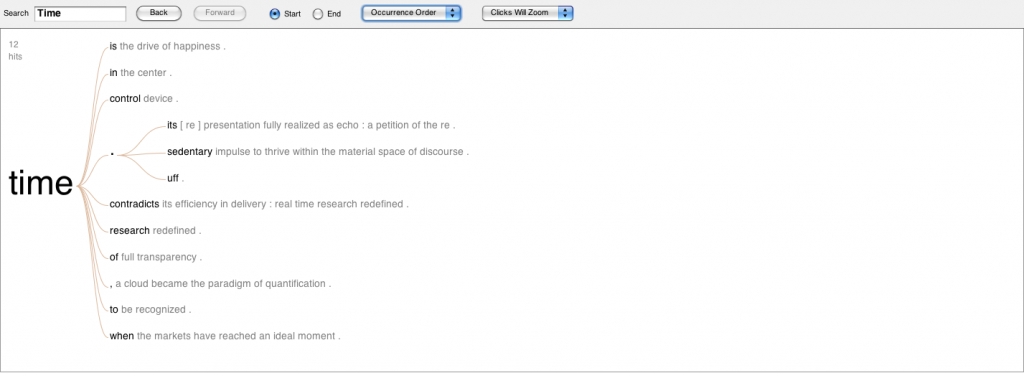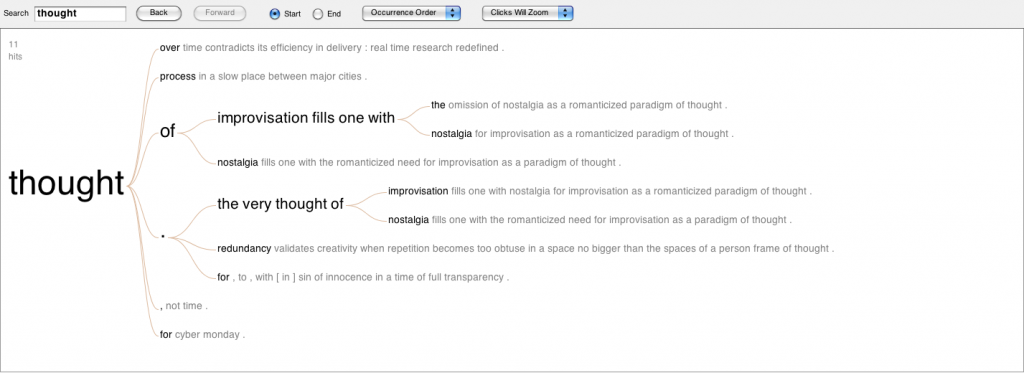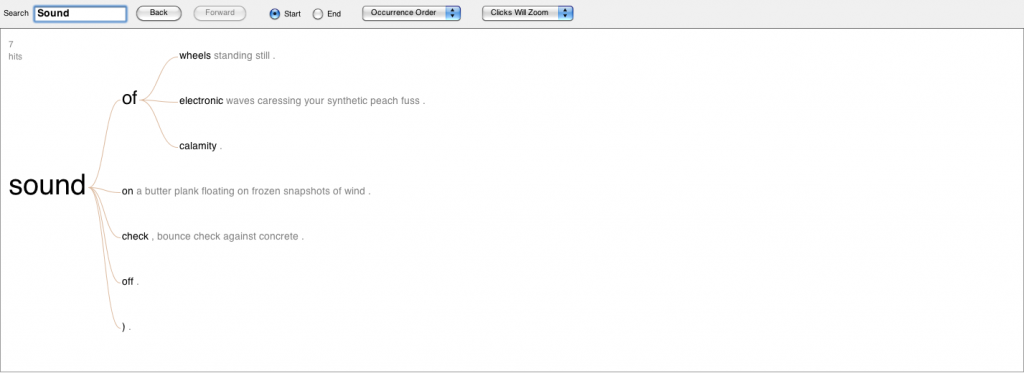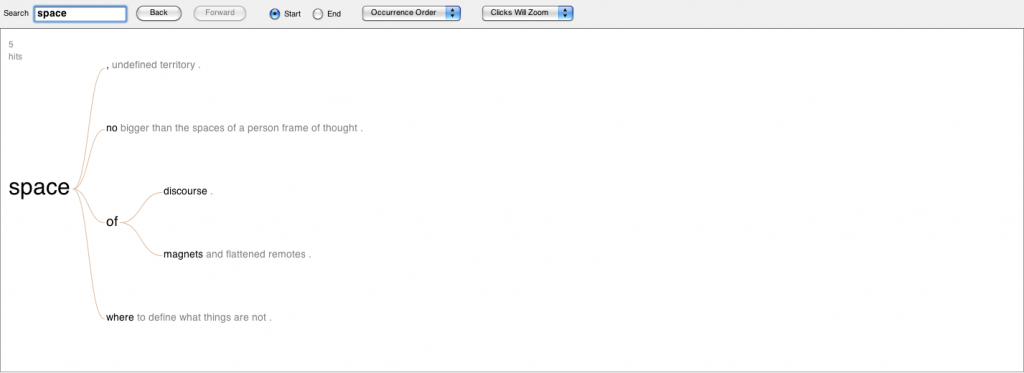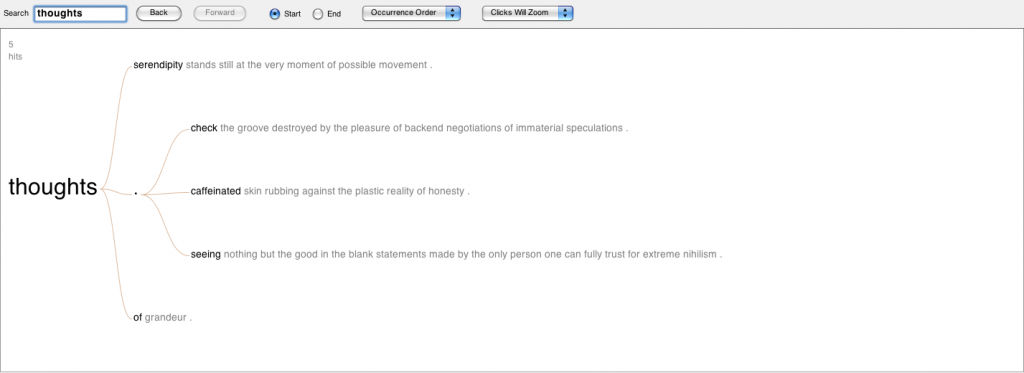Figure 1: four shots from around a third into the film. Left is original edit, Right is chronological edit
During the Fall of 2013, I analyzed Pulp Fiction with my students in my Video Art Class for the School of Visual Arts at Penn State. One of their assignments was to produce a video and then re-edit it to tell the same story but in different order, and therefore explore how aesthetics play a role in experiencing a narrative. We went over a few examples that would give them ideas, some of the links I provided as resources included Pulp Fiction and Memento. I share them below:
Infographic of Pulp Fiction in Chronological order:
http://visual.ly/pulp-fiction-chronological-order
What Watching ‘Memento’ in Chronological Order Can Teach About Story Structure:
http://nofilmschool.com/2013/06/watch-memento-in-chronological-order-story-structure/
Timeline for Memento:
http://www.thehighdefinite.com/2012/02/the-timeline-for-memento/
Memento Chronological Order (make sure to watch the original film before viewing this):
http://www.youtube.com/watch?v=Ishi0TyiBrs
We also viewed a chronological version of Pulp Fiction which was available on line but, unfortunately, was taken down. And I also presented in class a two column set of still frames of the two versions of the film (figure 2) of the way it was edited by Tarantino (left), and the chronological order version (right). We discussed how the film has a particular open-endedness due to the fact that its beginning and ending appear to be the middle of the story. This is fairly well known but it becomes more than evident in the two column visualization I provide below that the editing of the film is not as simple:
Figure 2: Pulp Fiction, original on left, chronological on right.
To generalize that the ending is the middle is a misconception, once we take a careful look at the visualization above, because we can notice that both versions of the film are actually almost in the same order for the first 10 minutes more or less. Notice that the early crime scene in the apartment happens almost at the same time in both versions. It is when Wallace’s wife is introduced that real changes can be noticed. But this is a bit difficult to grasp because the two opening scenes for the original and chronological versions provide diverging intertextual framings to engage with the characters as they are introduced throughout the film: to view a scene at a coffee shop and a scene of a boy and a Captain offer contrasting contexts for the next scene of Jules and Vincent.
One can argue that these scenes are different because in the chronological version the scene with Captain Koons is taken out of the original order in which the film was edited. This is important to note because aside from this scene, all that Tarantino appears to have done when he edited the film to have the middle as its beginning and ending is to develop a conventional story that is told chronologically. It is Captain Koons’s scene, then, that appears to stand out in the chronological order, because it functions as a flashback of Butch’s early childhood–notice that in the original version of the film the very next scene is Butch waking up from a dream before his boxing match (hence linking him to the flashback).
To stay true to a chronological timeline the scene with Koons has to be moved to the beginning of the film because this moment happened much earlier than all the other events. And this makes Koon’s scene the only exception to an otherwise minimal shift in the middle becoming both the beginning and ending of the film. But the flashback could be considered part of the chronological order because it is really Butch who is reliving something in his dream, and this reliving can also be considered part of his present. This then complicates the basic premise of the middle of the film being the ending and beginning of an otherwise chronological edit. What follows shows how the film would appear if we took the now conventional notion that the middle is the beginning and end:
Figure 3: Pulp Fiction, original on left, chronological on right. Sequences visualized to trace the chronological ending of the story.
When we look at this visualization we notice that the chronological ending of the film does not fall in the middle of the original film as is commonly argued. This means that the story is further edited. When breaking it down in more detail with color-codes, we can notice the following differences:

Figure 4: Pulp Fiction, original on left, chronological on right. Actual editing of chronological sequences for both original and chronological versions.
We can see that the original film does not fully follow a chronological order that was simply edited to make the middle of the chronology the beginning and ending. The chronological ending of the film takes place about two thirds of the way into the film, while the ending of the original does fall more or less around the middle of the chronological version. But even when this happens we can notice that parts of the chronology are moved around to enhance the experience of the story. For instance, the opening of the original takes place just before we reach the middle of the film, meaning that this part of the story is part of the ending, of course. We can look at each of the other segments and notice have they are shifted to tell the story in a way that will be more interesting than it being simply chronological.
If we number the order of the original edit and juxtapose it with the chronological version, we get this:
1 | 4
2 | 2
3 | 6
4 | 1 & 6
5 | 3
6 | 5
I numbered 1- 6 the chronological sequences of the original version (left column), and repositioned them into the chronological version of the film (right column). We can notice that the two opening scenes are different (diner and Captain Koons), but the very next scene is the same (Jules and Vincent in the car on their way to do a job). The second sequence in the original version is then split in order to turn it into the final chronological sequence (6, Jules and Vincent finishing the job to end up back in the diner), this is why 3 and 6 match about a third of the way into both film versions. Notice that six then comes together with sequence 1 to end at the very middle of the chronological version and match sequence 4 (Vincent and Mrs Wallace) in the original edit. It is sequence 5 (Butch fighting, escaping, running into Vincent, and Mr. Wallace, confronting the gimp, and the eventual get away) that is the actual chronological ending of the story, but we see that in the original edit this one is followed by section 6, which is the scene of Jules and Vincent at the diner, this is also sequence 1, as we know.
So, to say that Tarantino merely took the chronological development of the story and split it for the middle to be the beginning and ending is really not correct–this is what appears to be commonly assumed by some people when they think of the middle of the story being the ending and beginning of the actual film. There is much editing at play which makes this film more complex formally speaking.
But the editing is not so radical because going back and forth between closely related timelines is quite common in films. What is peculiar of Pulp Fiction and some other films by Tarantino is that they are edited as though things are happening now, there is no clear hint for the audience to acknowledge that we are going back and forth in time. Viewers must acknowledge this as they try to make sense of the story. This approach by Tarantino challenges the cinematic aspect, because the audience must remind themselves that they are viewing a film and they must make sense of its sequences. The audience must try to make them fit so that the story comes together; but this must take place in the viewers’ minds. Pulp Fiction, arguably, is a reflective exploration of how we come to engage with films, how the process of editing can become a form of communication that also questions how we try to make meaning of the content being experienced.
Another challenge of the film is the cultural stereotypes it presents, and how viewers must question them as well. This aspect of the film is more open ended, and Tarantino has been accused of promoting certain stereotypes, particularly of African Americans. Those questions are very important to discuss, and must be. And I take the time to discuss them in actual class. For this post, however, I focused on the formal aspects of Pulp Fiction.
